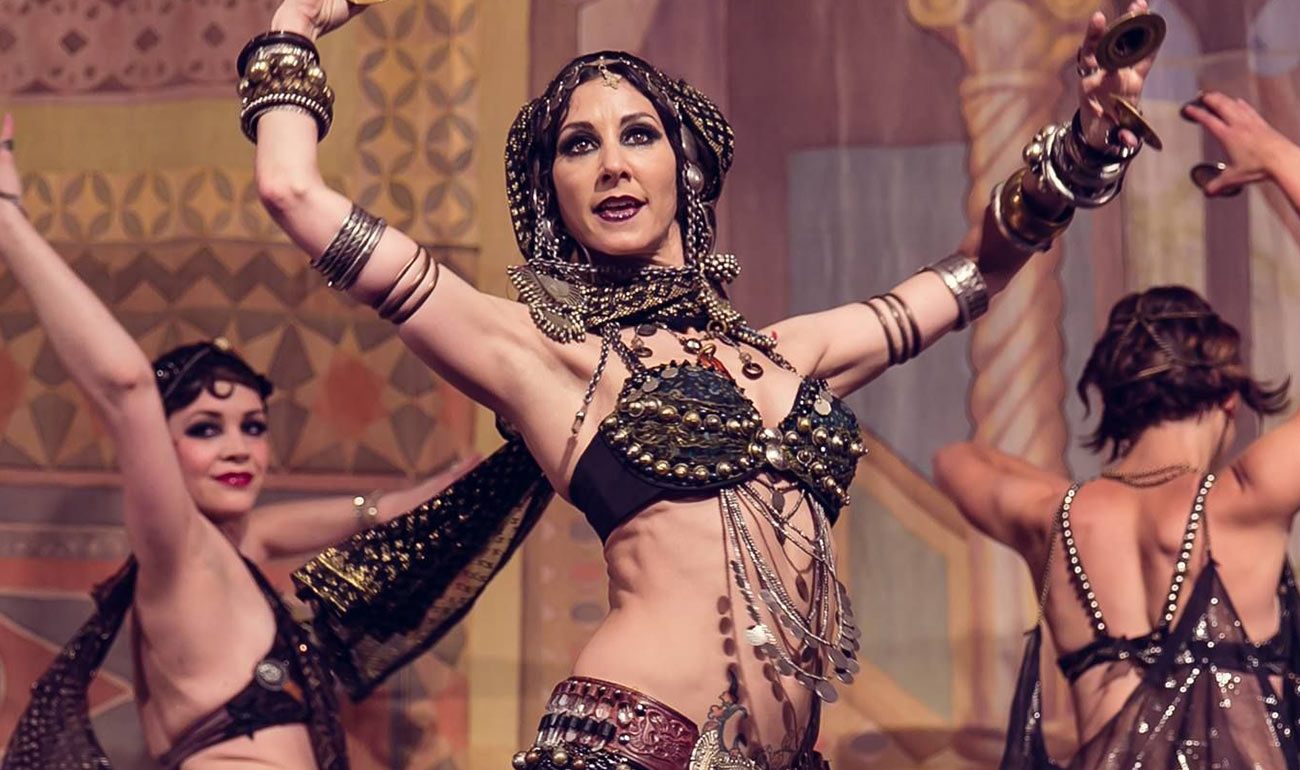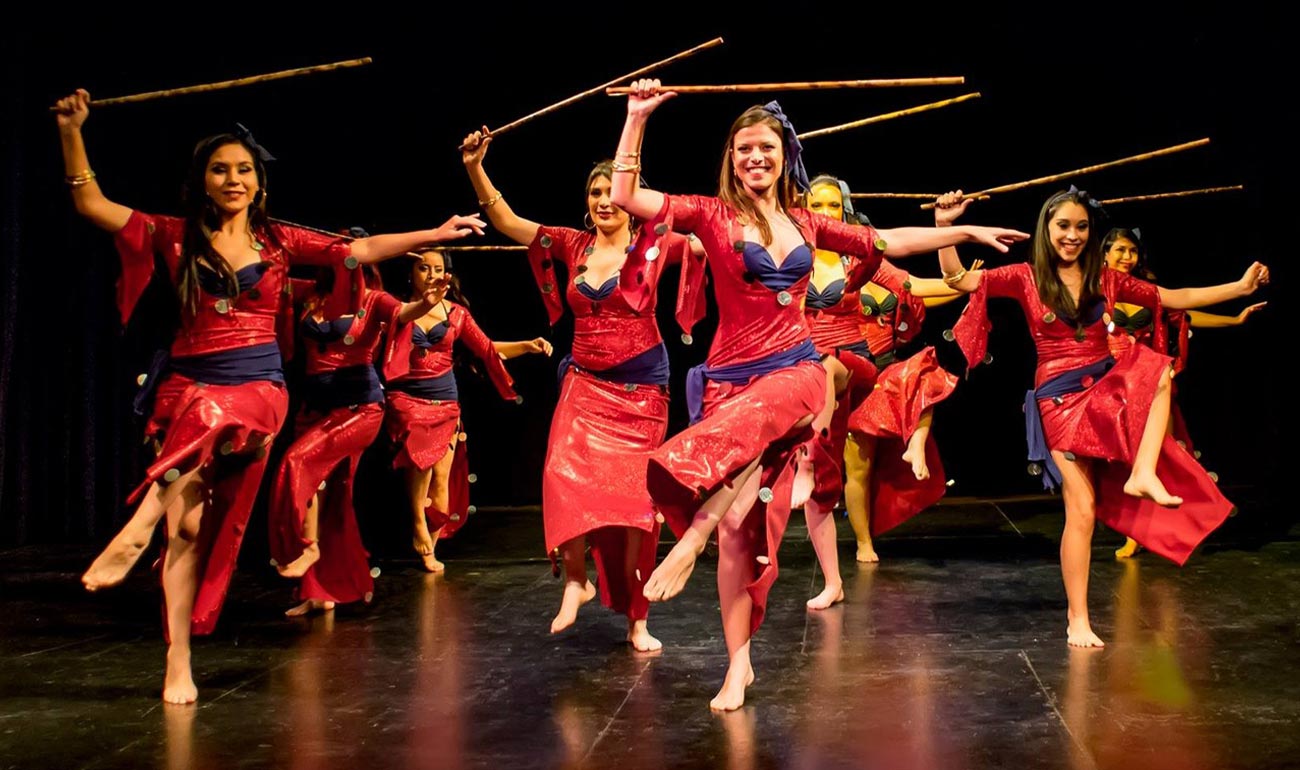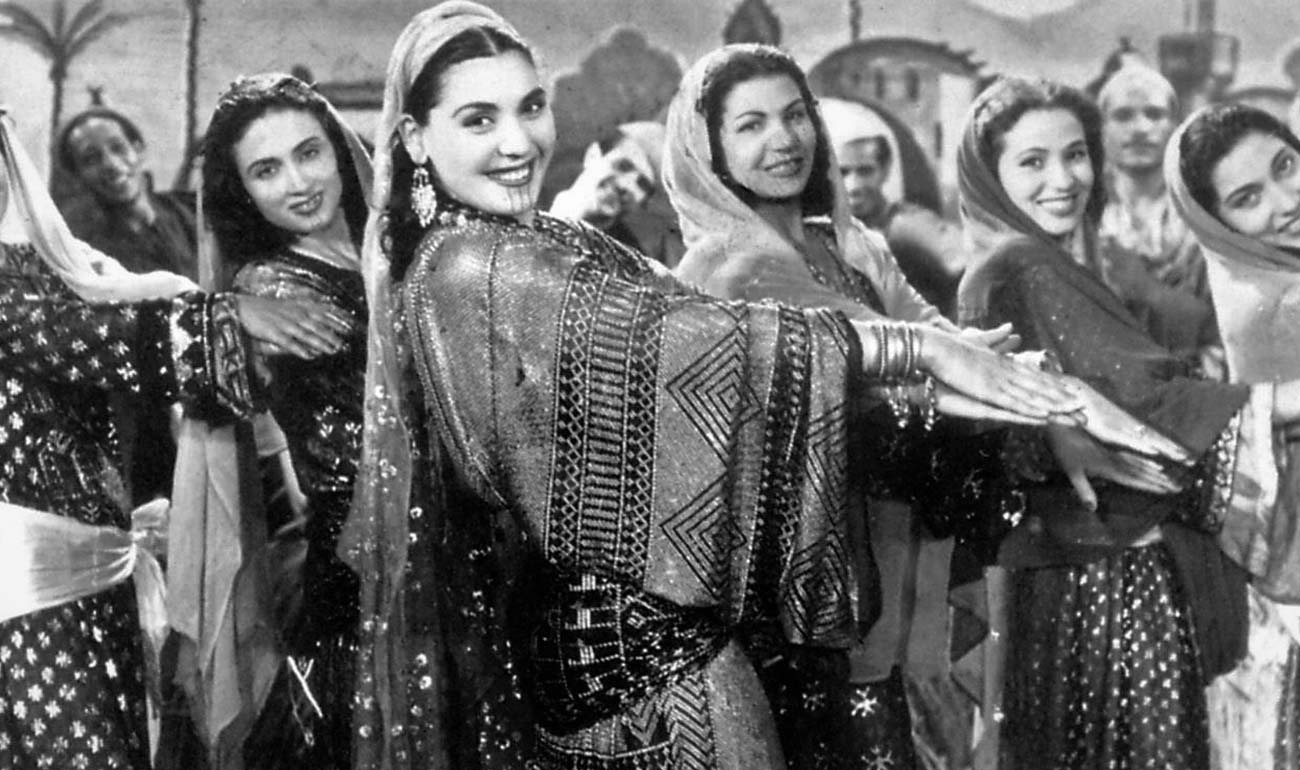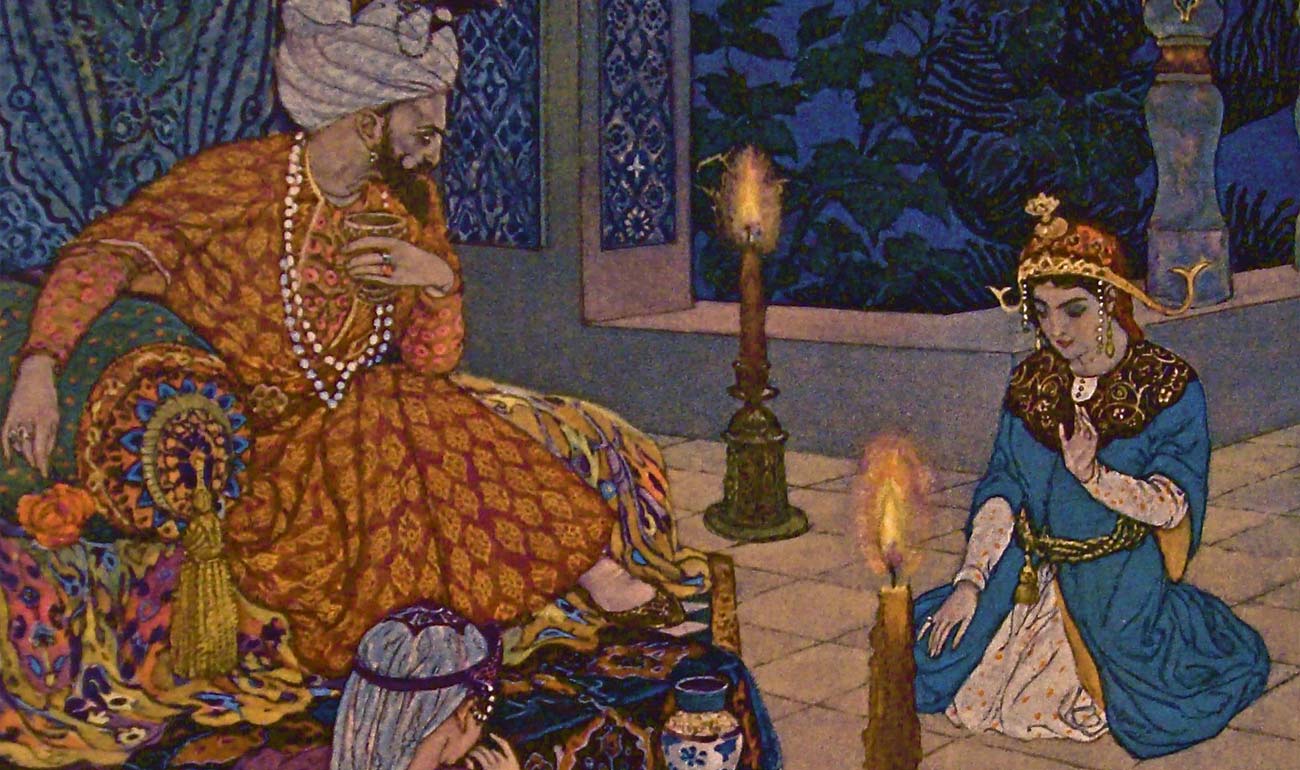
The 1001 nights of Princess Sherazade
Many ask me how my passion for oriental dance was born … well it is not easy to give a rational explanation, but I remember that since I was a young girl I have always been fascinated by the Middle East narrated in “The thousand and one nights“, and especially from the character of Princess Sherazade, inverse metaphor of the patriarchal society of the time, highly misogynistic; perfect embodiment of the sovereign, wise woman who knows how to juggle all the adversities of life.
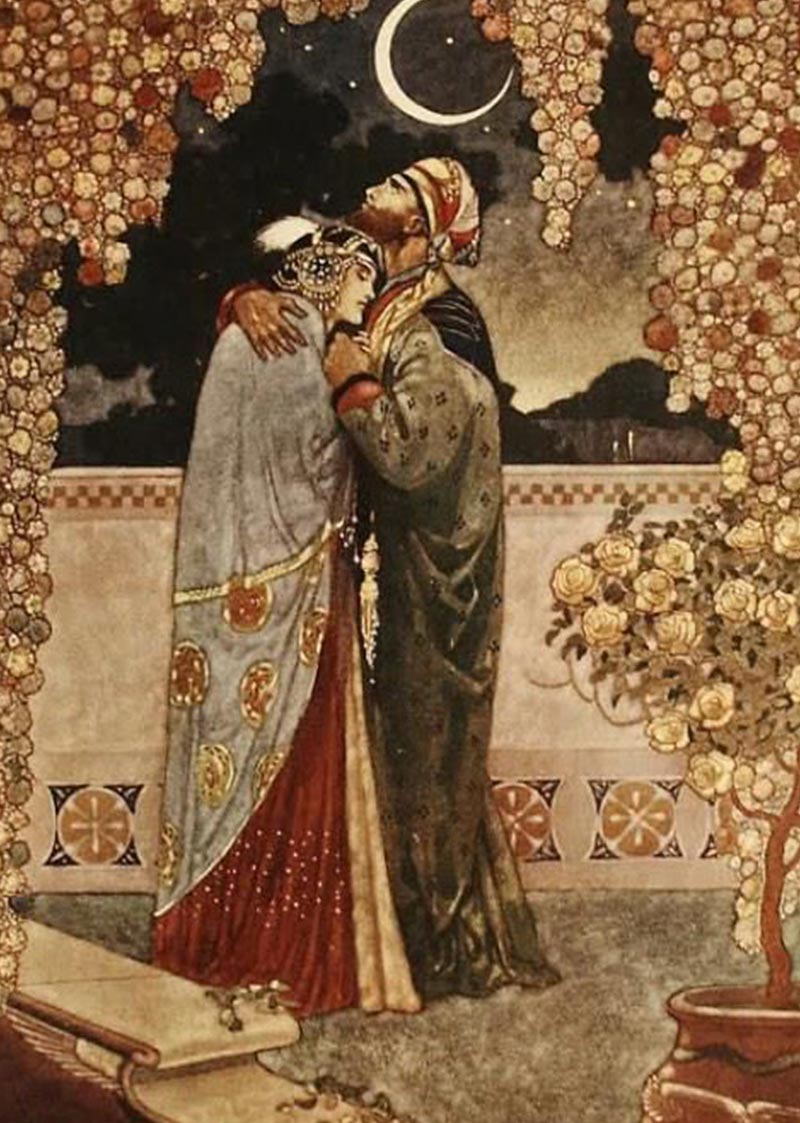
Rene Bull – Illustrations from Rubaiyat of Omar Khayyam (1913)
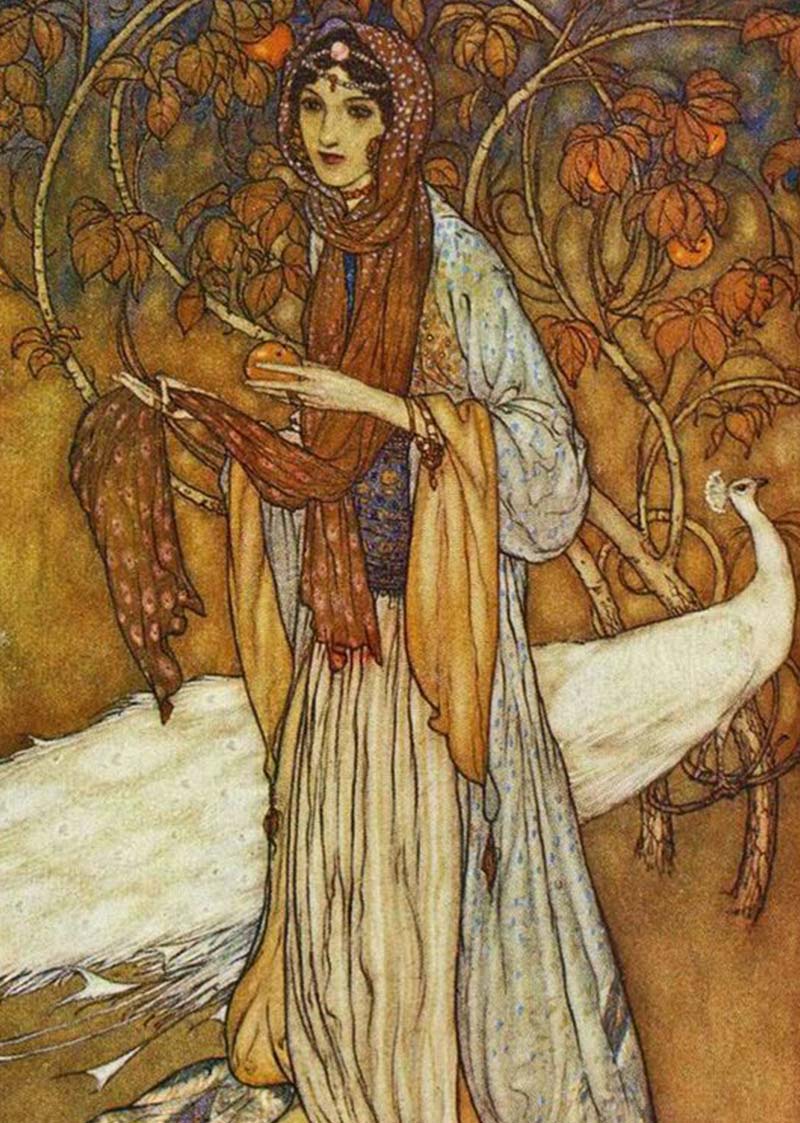
Princess Sheherazade - Edmund Dulac (1908)
THE THOUSAND AND ONE NIGHTS
The origins of this book are remote, intricate and mysterious just like the character of the princess, and in reality they are many stories (handed down orally or in writing), mainly of Persian, Indian and Arab origin, but which also come from other cultures , some very ancient. The version that has come down to us, is the Arabic version, translated into French by Galland, a 17th-century orientalist, who found only a part of the original novels.
The text focuses on a main story that acts as a frame, from which the stories of the various characters that populate the work’s imagination branch out. It is therefore a “matryoshka” story, with a network that unites the stories with each other: one connects to the other. And in each of them lives a Sherazade, which from time to time invents a new story. The opening formulas for each story function as “open sesame”, while the closing ones indicate the path of happiness and harmony, without however falling into reductive moralistic interpretations.
Shop some item inspired by Artemisia
THE ARABIC VERSION
In the Arabic version, the main axis of the narrative development has as its protagonist the Indian king Sahrigar, who is deeply disappointed by the betrayal of his first wife, kills her and puts in place a cruel mechanism to make sure he gets married every night with a girl. different virgin, who will be killed in the morning.
As the young women began to run low, Sherazade, the daughter of the great Vizier, volunteered, with the aim of interrupting the brutal practice of sacrifices.
The tactic devised by Sherazade is that, very ancient, of storytelling; the young bride begins to tell, apparently turned to her younger sister Duniazade, but being careful to ensure that the king is also in the same room, who, fascinated by the evocative fairy tales, actually becomes the main listener of the Thousand and One Nights .
Thanks to his prodigious inventiveness and his refined storytelling arts, every night he saves his head from the executioner’s scimitar, finding ways to fascinate his groom with his own stories and interrupting the story at dawn on the most beautiful. For a thousand and one nights he manages to postpone the execution until, after almost three years, the bloodthirsty monarch grants her life after being conquered by his cunning and the charm of his voice.
THE INDIAN VERSION
In the original Indian version, the content of the story is probably inspired by the tantric erotic tradition, and Sherazade reveals a very deep and spiritual content, which “unites” the soul’s mission with sexuality, revealing what are the real motivations that bring a woman to to betray.
Sherazade’s art is to create images with words; by telling and awakening eros and pleasure, she becomes a shaman-storyteller, capable of healing and healing, the wound of humiliation suffered, awakening the sexual and vital energy of the king.
The ability of the young woman, as well as her developed shrewdness, emerges even more due to the fact that Sherazade delights Sahrigar by telling stories that have unfaithful wives and betrayed husbands as protagonists, thus managing to divert the king’s attention from his personal affair, causing him to pacify himself with the female sphere.
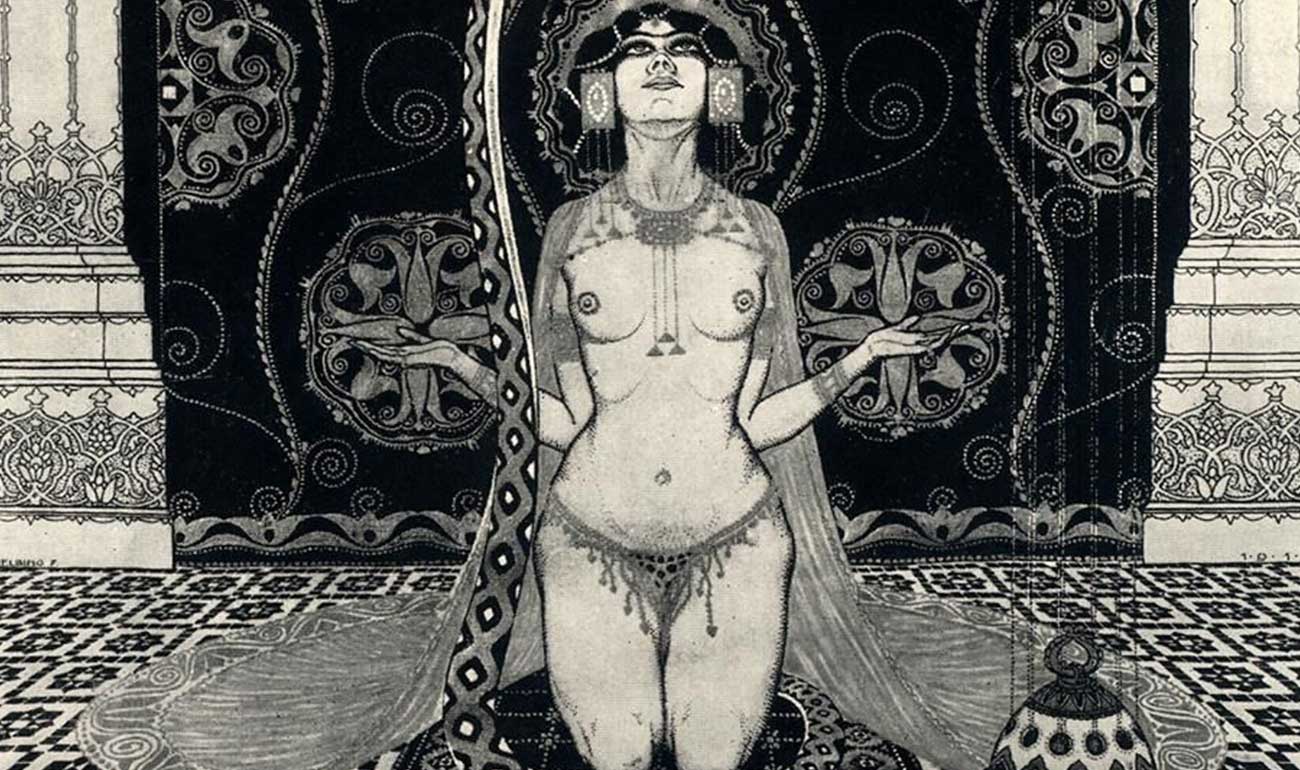
For a thousand and one nights, Sherazade revives desire with the power of her story, managing to turn the situation upside down, because through the fairy tales she narrates, she proposes a break, an exit from the schemes: it represents the transforming nature of the female who forces to a tension, to a change and therefore to transformation.
There is no simpler and more illuminating parable than that of Princess Sherazade to explain the importance of fantasy in the life of human beings, which is why one of the most seductive and immortal literary characters of all languages and cultures still remains in the collective imagination, symbol of beauty, sensuality and female intelligence.
Sherazade remembers other figures such as Eva, Elena, Circe, Nausicaa, the sirens, who were teachers in the art of seduction.
In 1888 the Russian composer Nikolai Rimsky-Korsakov dedicated a splendid symphonic suite to her.




